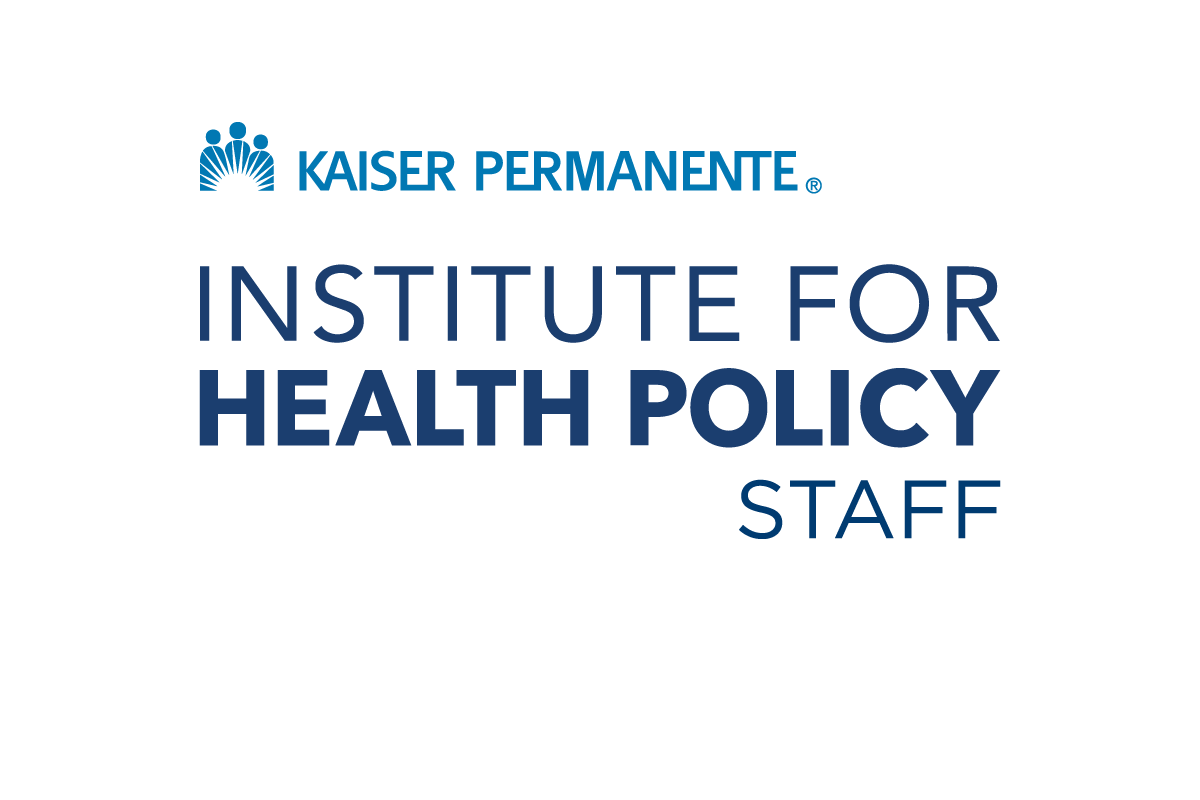
When public policy, institutional practices, and other social and economic structures combine to perpetuate inequity between people of different ethnic groups, it is known as structural racism.

This phenomenon – while not an individual character flaw or personal failure – is part of a system of power that affects the social and environmental conditions associated with poor health among people of color and is an important consideration when addressing health disparities. That is the core of the message that Camara Phyllis Jones, MD, MPH, PhD, president of the American Public Health Association, is delivering to public health and health care leaders nationwide as part of her call for a National Campaign Against Racism.
Dr. Jones shared her thoughts about the impacts of racism on health prior to a presentation at the 2015-2016 Kaiser Permanente Lecture Series at the UC Berkeley School of Public Health.
What is your definition of racism?
I define racism as a system of structuring opportunity and assigning value based on the social interpretation of how one looks (which is what we call “race”), that unfairly disadvantages some individuals and communities, unfairly advantages other individuals and communities, and saps the strength of the whole society through the waste of human resources.
Let’s unpack that definition
When I talk about racism. I’m talking about a system, not an individual character flaw or a personal moral failing. It is a system of power that structures opportunity (education, housing, jobs, justice) and assigns value (worthy or unworthy, full of potential or full of menace) based on so-called “race”, the social interpretation of how we look.
The system of racism has three impacts:
First, racism unfairly disadvantages some individuals and communities. When we think or talk about racism at all in this country, this is what we see.
But it is important to understand that every unfair disadvantage has its reciprocal unfair advantage. So the second impact of racism is that it unfairly advantages other individuals and communities. That’s the whole notion of unearned white privilege that we hardly ever talk about in this nation.
The third, and perhaps most profound, impact is that racism is sapping the strength of the whole society by wasting human resources. When the brilliance in some of our communities is ignored and we’re not investing in the full education of our kids—because we don’t think there’s genius in the barrios or in the ghettos or on the reservations—that’s sapping the strength of our whole society.
So, my definition of racism goes beyond adjudicating who’s racist and who’s not. We’re all adversely impacted by the system of racism.
Why is racism so difficult of Americans to discuss? It’s often referred to as a courageous conversation as if it’s something frightening.
It is because many people in this country consider racism to be a thing of the past. They see the progress in race relations that has been made on some fronts, including the election of our nation’s first African-American President, and conclude that racism was just an unfortunate chapter in our nation’s history that has no relevance today.
But racism is indeed alive and well, and continues to have profound impacts on the health and well-being of the nation.
When we understand that discussing racism is not the same as calling you a racist, we will be able to engage in productive discussions. We need to understand that in this country there are people just across town who are as kind, funny, generous, smart, and hard-working as you are, but live in very different circumstances from yours. When we start bursting through our bubbles to experience our common humanity, then we will not only be interested in the stories of others (and how racism shapes those stories), but also believe the stories of others. And only then will we be moved to join in the stories of others to dismantle this system which is adversely impacting us all.
By the way, I have developed several allegories on “race” and racism that make the conversation even easier, illuminating topics that are otherwise difficult for many Americans to understand or discuss. When you can talk about a gardener and her two flower boxes with rich and poor soil, everyone can ask fruitful questions and explore different levels of racism. My 2014 TEDx Emory talk includes 4 of my allegories which your readers may enjoy.
How do you define health equity?
I say that health equity is the assurance of the conditions for optimal health for all people. That differs from the Healthy People 2020 definition, which says that health equity is the attainment of the highest level of health for all people.
I agree that the attainment of the highest level health for all people is our goal. But I don’t think that’s health equity. Health equity has to be a process. What if we attained the goal last week, are we done? No. Health equity has to be an ongoing process of assurance. Interestingly, “assurance” is one of the three core functions of public health that were identified by the Institute of Medicine, along with “assessment” and “policy development.”
How do we get there?
Achieving health equity requires at least these three things.
First, valuing all individuals and populations equally. That means looking at who’s at the decision-making table and who’s not. And what’s on the agenda and what’s not. And being intolerant of inaction in the face of need. If you value all individuals and all populations equally, you will not allow inaction in the face of need.
Second, recognizing and rectifying historical injustices. That requires knowing our full histories—all of our histories. And acknowledging the continuing impact of our histories through contemporary structural factors that are perpetuate those initial historical injustices. And then going beyond the acknowledgment to make things right, to rectify historical injustices so that we interrupt our cycle of inherited disadvantage and its reciprocal inherited advantage.
Third, providing resources according to need. For example, if I’m the health director of a state with five counties and I have a million dollars, the easiest political solution would be to give $200,000 to each county. But it would be politically courageous to recognize the differences in need across these counties, and say “I’m going to provide resources according to need.” Maybe County A is not going to get any money in this funding cycle, or the next cycle, or the next cycle—until the other counties catch up. A challenge is that people who are privileged don’t always recognize their privilege, or they often don’t recognize that there exist real differences in need.
By the way, health disparities will be eliminated when health equity is achieved. Health disparities are the differences in outcomes that we have grown so accustomed to documenting. Health equity is about all the opportunities, exposures, resources, and risks that come before.
What are some of our societal barriers to achieving health equity?
We are a-historical. The present is seen as disconnected from the past, and the current distribution of advantage and disadvantage is seen as happenstance. We don’t want to take history into account. Some people feel that there’s an even playing field now, and they want to move on as if all “that stuff” in the past isn’t relevant.
Additionally, there is a very narrow focus on the individual. It’s the notion that if you just pull yourself up by your bootstraps, you can make it. Systems and structures are invisible, and there is a limited sense of inter-dependence.
Last is the myth of meritocracy. Many believe that if you work hard, you’ll make it. Clearly, most people who’ve made it have worked hard. But there are many, many other people who have worked just as hard who will never make it because we have an uneven playing field. There are structural barriers to success in their way. The myth of meritocracy makes these structural barriers invisible.
It’s going to take courage to for many people to say, “There is a history of racism.” It’s going to take courage to acknowledge our history and take steps to rectify it. It’s going to take courage to say, “The structures and systems of racism do matter.” And you have to recognize that hard work doesn’t always pay off in this country.
You differentiate the “social determinants of equity” from the “social determinants of health.” How are they different and why is the distinction important?
Social determinants of health include things like poverty and adverse neighborhood conditions. Creating walking paths, bringing grocery stores to underserved communities, or encouraging corner stores to sell fresh fruits and vegetables are ways to address the social determinants of health. These are the contexts in which our health behaviors arise and confer risk or protection.
Social determinants of equity include systems of power like racism, sexism, heterosexism and economic systems like capitalism. These are the systems that create the range of contexts that we see in our nation, and that differentially distribute different groups to different contexts. The mechanisms of the social determinants of equity are in our decision making processes, including our structures, policies, practices, norms, and values. Addressing the social determinants of equity involves changing decision-making processes so that they are inclusive, address history, and provide resources according to need. Who is at the table making decisions about where grocery stores or liquor stores are located, and who is not? What are the written zoning policies, and what are the unwritten practices and norms regarding solicitation of community input? What are the values which make placement of toxic dump sites in some communities inconceivable but in others a matter of course?
When people think about health today in the United States, they are focused on the individual and individual behavior. Are you getting five to nine servings of fresh fruits and vegetables a day? Are you refraining from smoking? Are you practicing safe sex? Do you have access to health care? Individual behaviors matter—they surely do. But if you ask yourself, “Why do some people eat unhealthy food and other people eat healthy food?”—you have to broaden your gaze beyond individual behaviors to look at the social determinants of health and the context in which people live.
I can’t just tell my patients to eat better. I have to understand where they live and their ability to access healthy foods. I have to look at the context of their social determinants of health.
We take the current distribution of social/economic position and resources for granted. Again, there’s a lack of the history. It doesn’t just so happen that some people are overrepresented in poverty, while other people are overrepresented in wealth. You have to ask, “How did that happen and what’s maintaining those inequities?” It’s all well and good to put resources in low income communities, but you have to ask, “How did those communities become poor and what systems and structures are keeping them that way?”
Camara Jones MD, MPH, PhD is a family physician and epidemiologist whose work focuses on the impact of racism on the health and well-being of the nation. She is President, American Public Health Association, member of the National Board of Public Health Examiners, and 2000-2010 research director on social determinants of health and equity within the National Center for Chronic Disease Prevention and Health Promotion at the Centers for Disease Control and Prevention. She is currently a Senior Fellow in the Satcher Health Leadership Institute and the Cardiovascular Research Institute at the Morehouse School of Medicine.
This interview, conducted in February 2016, has been edited and condensed.